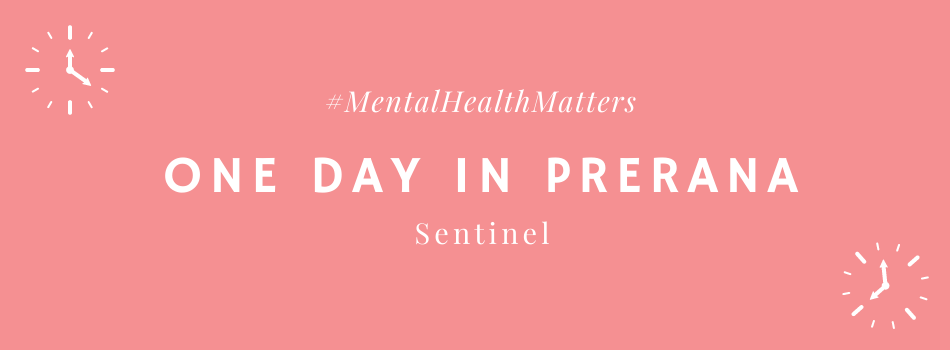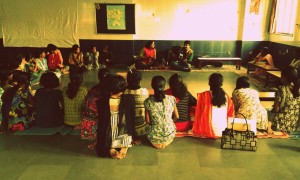
#2 : Through the Lens of a Counselor
Priya Ahluwalia
COUNSELOR
Please Note : Prerana started the series “One-day at Prerana” to share the experiences of how a day in the life of a social worker, counselor, and other team members of Prerana looks like. The stories in this series narrate the experiences of the team prior to the COVID-19 situation. Current interventions and experiences of the Team members may differ from this narrative.
It was a Tuesday afternoon. I had spent much of my morning hours reading through different textbooks on trauma counseling in preparation of my session with Palak (name changed). Although I felt I was well prepared, armed with a list of activities and art-based material, I couldn’t help but feel slightly cautious. Palak is a child in need of care and protection and had been residing in different child care institutions for much of her childhood. Lately, she had been having a particularly tough time coming to terms with her history of trauma while also attempting to cope with the daily demands of life in the institution. Palak’s mother is a victim of commercial sexual exploitation and Palak had experienced neglect and abandonment at her hands. Palak has also been physically and sexually assaulted by her biological father. A complaint was registered against him and subsequently he was arrested and Palak was placed in a child care institution. Palak’s mother blamed her for the abuse and her father’s arrest.
Palak was deeply traumatized by this incident which was further worsened by incidents of bullying in the institution and her mother’s refusal to meet her. Due to several reasons including, caregivers facing difficulty in managing Palak’s self-harming behaviour, lack of educational and vocational training options, and the strict rules of the child care institutions, Palak was shifted across six child care institutions in two years. Recently, she was placed in another child care institution but it was not the one she was expected to be transferred to. At this point, she was experiencing severe distress in adjusting to the new residential setting, which did not offer any academic classes or vocational training. Her distress was aggravated as she was worried about her mother’s absence from her life since the past few months.
On that Tuesday, as soon as I entered the institution for her session, I knew something was different. Unlike the previous sessions, Palak did not wave or indicate towards any form of acknowledgement when she saw me. After informing the resident caregiver that I was there for my weekly session with Palak, I waited for her at our pre-established counseling space. The resident caregiver informed Palak of my presence and I observed Palak shaking her head as if telling the caregiver that she did not wish to meet me.
During our initial sessions, Palak and I had established that I would never force her to attend any session. Instead, I would wait for her to join the session on her own. For this session as well, I waited several minutes before Palak came and joined me. I could see Palak was distressed and angry. As soon as I reflected on her emotion, Palak launched into a scathing attack on the failure of counseling sessions. She was infuriated with the lack of concrete results of the sessions and blamed the counselor for not being able to meet her mother. Her previous narratives of hurt, abandonment and neglect began to re-emerge.
While I attempted to stabilize her, she seemed resolute in her decision to end counseling sessions. Eventually after her catharsis, Palak left the session mid-way. Although I was deeply affected and hurt by Palak’s statements, I understood that they came from a position of deep pain and she viewed the counseling space as safe enough to voice her distress. Based on the previous sessions, I also somewhere knew that her decision to end the counseling sessions was possibly temporary and as her emotions settle, she might want to continue her sessions with me. However, her outburst was noticed by the caregivers and the Superintendent of the institution. Immediately, the Superintendent called for a meeting with Palak and me. The superintendent asked Palak to explain her behaviour. As a counselor I was aware that this line of questioning would be more distressing for Palak. Therefore, I tried to intervene and explained to the Superintendent that this was a normal reaction to a distressing environment. While the Superintendent did not seem convinced, Palak perhaps viewed the entire situation as hostile and threatening. She exchanged a few angry words and left. The Superintendent was not happy with the situation. She clearly informed me that my interventions were not satisfactory as there had been no improvement in Palak’s behaviour. Since the child also did not wish to attend the sessions anymore, I was asked to discontinue my visits to the institution.
Shocked by the backlash, I attempted to explain that multiple stakeholders contributed to Palak’s mental well-being. Furthermore, Palak’s current distress did not stem from the counseling sessions but rather from several other factors including her mother’s unavailability. I informed the superintendent that Palak’s caseworker was constantly trying to establish contact with Palak’s mother. I added that positive interventions from other stakeholders along with dedicated counseling sessions could prove to be beneficial to the child over a period of time. Hasty discontinuation of counseling sessions have a negative impact on the overall wellbeing of the child, especially in the current scenario since one of the primary concerns that emerged in Palak’s narrative was the lack of consistency and continuity in her life. However, the Superintendent was not satisfied and asked me to leave the premises.
The session with Palak hinted at how there could be a significant impact on an individual’s well-being if there was a lack of coordination and cooperation among stakeholders. We are a product of our system and continue to survive in it. Counseling as a profession and a service exists within this system and therefore cannot be expected to produce independent results. An intersectional approach to intervention is essential for promoting holistic development and well-being of an individual. However, the same could not be executed in Palak’s case.
Reflecting on the session and the subsequent events, I realized that many people in the field of child rights continue to hold a narrow and superficial understanding about the process of counseling. Many caregivers in the institution expect counseling sessions to lead to measurable and concrete results and immediate behavior change. However, the process of counseling is not about doing, but rather about being. The counseling space allows and accepts the client as they are without any judgement. Thus, encouraging the clients to use this space as a medium to freely express thoughts and feelings about issues that concern them. The counseling relationship views the client as the expert of their own life. The counselor is seen as a supporter, providing temporary assistance to them in navigating through some difficult times with the help of special skills and strategies. This becomes especially important while working with victims of trauma. The counselor offers the counseling space as an opportunity to the client to not only freely express the feelings and thoughts associated with the traumatic incident but also reclaim back some of the control that they may have lost during it.
The counselor also equips the client with stabilization skills. Through the process of stabilization and reprocessing traumatic memories, the client is encouraged to re-author their life and reintegrate these experiences to their self-structure without impeding their future growth. Thus, a counselor’s skill set is not responsible for fixing the child but listening to their stories as they forge their new identity. Although the process of counseling sounds easy, the input and output ratio in counseling is highly distorted. As counselors, we may spend hours preparing for our sessions and are consistently equipping ourselves with strategies that we may not ever get a chance to use. Our significant input could be met with a seemingly small result, such as a generally quiet child talking about the weather. In counseling, results cannot be measured as lists of targets achieved rather a consistent and sustained effort might indicate a small change in behavior over time.
As the day came to an end and I headed back home, among my many reflections, the nagging voice of self-doubt was prominent. ‘Was my work good enough?’ In these moments of vulnerability, perhaps my intention to join the profession becomes my biggest source of strength. I joined the profession with the idea that positive mental health and well-being was a universal right. Thus, I believed that mental healthcare should not be a luxury afforded by a few but rather a service provided to all. My journey as a mental health care professional providing mental health services to a vulnerable and marginalized population struggling with unique circumstances and challenges has just begun.
So, while I may not know if my work is ever good enough but I definitely know I have a long way to go.
To be or not to be? Questions on motherhood searching answers
The blog post was first published on Dr. Pravin Patkar's Blog 'Expressions'. The post sheds light on the impact and Read more
Trauma cannot be addressed as a standalone problem. It needs to be addressed holistically, keeping in mind various experiences and Read more



